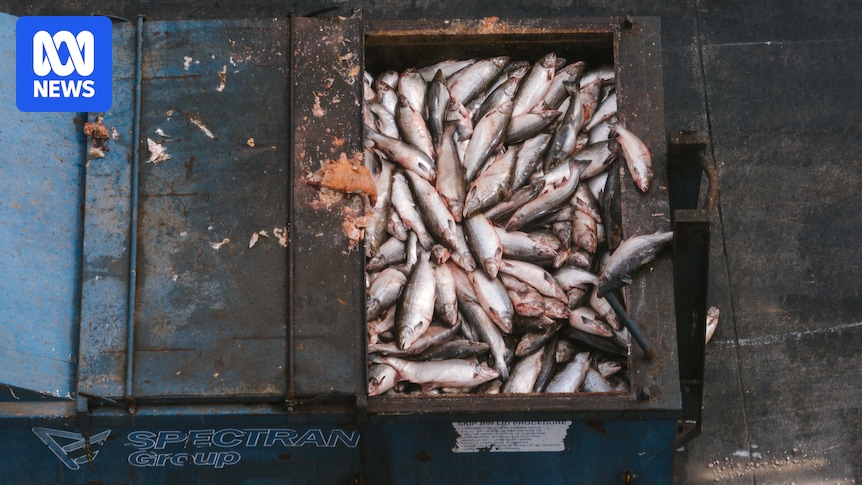
A recent review of last summer’s mass salmon mortality event in Tasmania has revealed significant failures within the industry, highlighting a lack of accurate and timely information that delayed critical decision-making. The event, which occurred from January to April, was caused by a bacterial disease known as P.salmonis rickettsia, resulting in the deaths of an estimated 10 tonnes of salmon in south-east Tasmanian waters. This led to dead fish matter washing up on local beaches, causing environmental and community concerns.
The Tasmanian government has released a multi-agency debrief on the incident, detailing the technical challenges faced in coordinating the response, as well as difficulties with waste logistics and disease detection. The report pointed out shortcomings in how the salmon industry engaged with regulators and noted the absence of a “mass mortality response plan.”
“In the absence of this plan, and what agencies described as a lack of accurate, timely advice from industry, communication and event coordination by government had duplication, initial role confusion, and delayed critical decision-making,” the debrief reads. “This generated a gap in coordinated public messaging, undermining community trust.”
Environmental Volatility and Disease Threats
The debrief, which involved consultations with government agencies and salmon industry operators, also raised concerns about increasing environmental volatility and emerging marine disease threats. It emphasized that “business as usual” approaches would not suffice in addressing these challenges. The bacterial disease P.salmonis has been present in Tasmania’s east coast waters since at least 2021 and in the south-east since 2023, with salmon being susceptible to similar bacterial organisms for over two decades.
The disease typically emerges when seawater temperatures range between 12 and 18 degrees Celsius and cannot survive above 25 degrees Celsius. It is now considered endemic in Tasmania’s southern and eastern waters. The debrief listed 10 key actions, including the establishment of a marine heatwave response plan, which has since been released, the consideration of an industry code of practice, and a review of regulations surrounding information reporting.
Disagreement on Government Response
In the aftermath of the mass mortality event, there was a notable divergence in opinions between the government and the industry. The industry criticized the government’s initial response as “overly regulatory” and expressed concerns that the event could lead to further regulations. On the other hand, government agencies felt that existing frameworks were not robust enough to handle such incidents.
The industry also voiced concerns about being exposed to right to information (RTI) requests, which affected its “internal candour” during the response. The debrief highlighted a lack of an overarching control hierarchy, noting that “the points of divergence between government and industry reflect different assumptions about authority, trust, and purpose during significant events.”
An RTI document released last month showed mortalities in a Huon Aquaculture pen in the D’Entrecasteaux Channel had a rolling seven-day average of 0.2 percent for 2025, four times higher than in 2024, but just below the level that requires reporting to the regulator. Of these, 60 percent were attributed to P.salmonis, compared with the usual 20 percent.
Awaiting Approval for New Antibiotics
The salmon industry is currently awaiting federal approval to begin using the antibiotic florfenicol ahead of this summer, with expectations of approval within days. During last summer’s mass mortality event, the use of another antibiotic, oxytetracycline, was described by Huon Aquaculture as “largely ineffective.” Florfenicol is already used by overseas farmed salmon industries.
Officials from the Chilean industry, where P.salmonis has been a persistent issue, visited Tasmania in April. They provided advice on vaccinations, selective breeding, antibiotic treatment, and epidemiological surveillance. The debrief suggested a “detailed examination” of Chile’s regulatory control program for P.salmonis and noted the ongoing development of vaccines in Tasmania for farmed salmon, which could provide 15 months’ protection.
“These may include sea lice infections, sea lice treatment … harmful algal blooms, jellyfish blooms … other co-infections.”
Industry and Government at a Crossroads
Salmon Tasmania’s chief executive officer, John Whittington, stated that the industry is preparing for summer with updates on how salmon are “bred, fed, and vaccinated.” He emphasized the importance of having multiple tools at their disposal to address the challenges ahead. Meanwhile, independent state MP Peter George, a former anti-salmon farm campaigner, criticized the industry’s response, calling the debrief a “litany of failures.”
“There was no plan then, quite clearly, to deal with this event despite the fact it was predictable,” Mr. George said. He expressed concerns that warming waters off eastern Tasmania—reported to be warming four times faster than the global average—will make the industry increasingly susceptible to mass mortality events.
In response, the government has promised a comprehensive study into the environmental, social, and economic impacts of the salmon industry. Additionally, a pause on the industry’s expansion has been announced while the study is conducted, marking a critical juncture for Tasmania’s salmon industry as it navigates these complex challenges.







